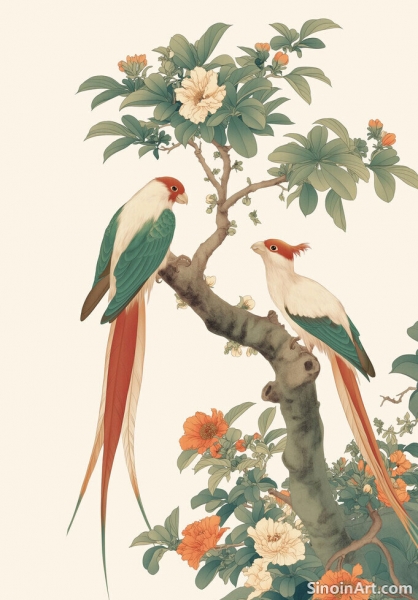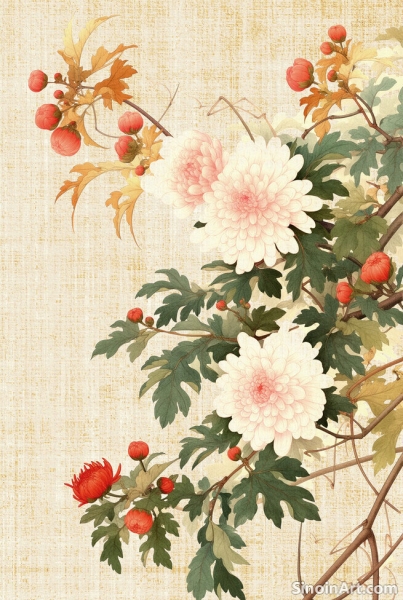The Cultural Significance of Gongbi: More Than Just Art
|
Gongbi painting is not simply a beautiful art form; it is a profound expression of Chinese culture, history, and philosophy. It is deeply rooted in tradition, embodying the values, aesthetics, and worldview of Chinese civilization. Understanding the cultural significance of Gongbi painting is essential for appreciating its true depth and meaning. It is an art form deeply connected to Chinese identity and heritage.  Gongbi painting reflects the Chinese emphasis on meticulousness, patience, and precision. The painstaking process of creating a Gongbi artwork, with its carefully layered colors and detailed brushwork, embodies these cultural values. It is a testament to the Chinese appreciation for craftsmanship and dedication to mastering a skill. The process itself mirrors the idea of discipline and dedication in life.  The subject matter of Gongbi painting often reflects Chinese cultural beliefs and values. The depictions of auspicious flowers, mythical creatures, and courtly scenes communicate messages of prosperity, power, and social harmony. The choice of subjects often reflects social norms and the values that were held dear during various periods of Chinese history.  The use of traditional materials in Gongbi painting also has cultural significance. The selection of natural pigments, brushes made from animal hair, and fine silk or xuan paper reflects the Chinese reverence for nature and the natural world. These materials have been used for centuries and represent the passing down of traditions from one generation to the next. Gongbi painting has played an important role in the transmission of Chinese history and culture. From its use in recording historical events to its role in depicting scenes from literature and mythology, Gongbi paintings have acted as visual documents, preserving cultural narratives for generations to come. The detailed nature of Gongbi allows viewers to see accurate depictions of architecture, clothing, and objects that would be difficult to understand otherwise. Ultimately, Gongbi painting is much more than just a visual art form; it is a powerful expression of Chinese cultural identity. It reflects the values, aesthetics, and worldview of Chinese civilization. Its meticulous detail and symbolic richness offer a window into the heart of Chinese culture, inviting viewers to connect with its rich history and enduring legacy. The practice of this art form helps to maintain cultural connections and identity, playing a significant role in preserving history. |
Tag : Cultural Significance Gongbi, Chinese Art and Culture, Traditional Chinese Values, Gongbi Painting History, Chinese Artistic Heritage
Related information
- Gongbi vs. Xieyi: Understanding the Two Pillars of Chinese Painting
- The Delicate Dance of the Brush: An Introduction to Gongbi
- Commissioning a Gongbi Painting: What You Need to Know
- Gongbi and the Depiction of Architecture
- The Influence of Taoism and Confucianism on Gongbi
This article contrasts Gongbi painting with Xieyi painting, highlighting the differences in their techniques, brushwork, use of color, and overall artistic goals within the landscape of Chinese painting traditions.
This article introduces Gongbi painting, a meticulous Chinese art form characterized by its detailed and realistic depictions, outlining its history, techniques, and contemporary relevance.
This article provides a guide for those interested in commissioning a Gongbi painting, highlighting the importance of clear communication, artist selection, understanding the process, setting realistic timelines, and managing budget expectations.
This article explores the depiction of architecture in Gongbi painting, highlighting the meticulous detail, historical accuracy, use of perspective, and interplay of light and shadow, showcasing how this art form captures both the physical appearance and cultural significance of buildings.
This article explores the influence of Taoism and Confucianism on Gongbi painting, highlighting how these philosophical traditions have shaped the aesthetic values, themes, and overall approach to artistic creation in this meticulous art form.